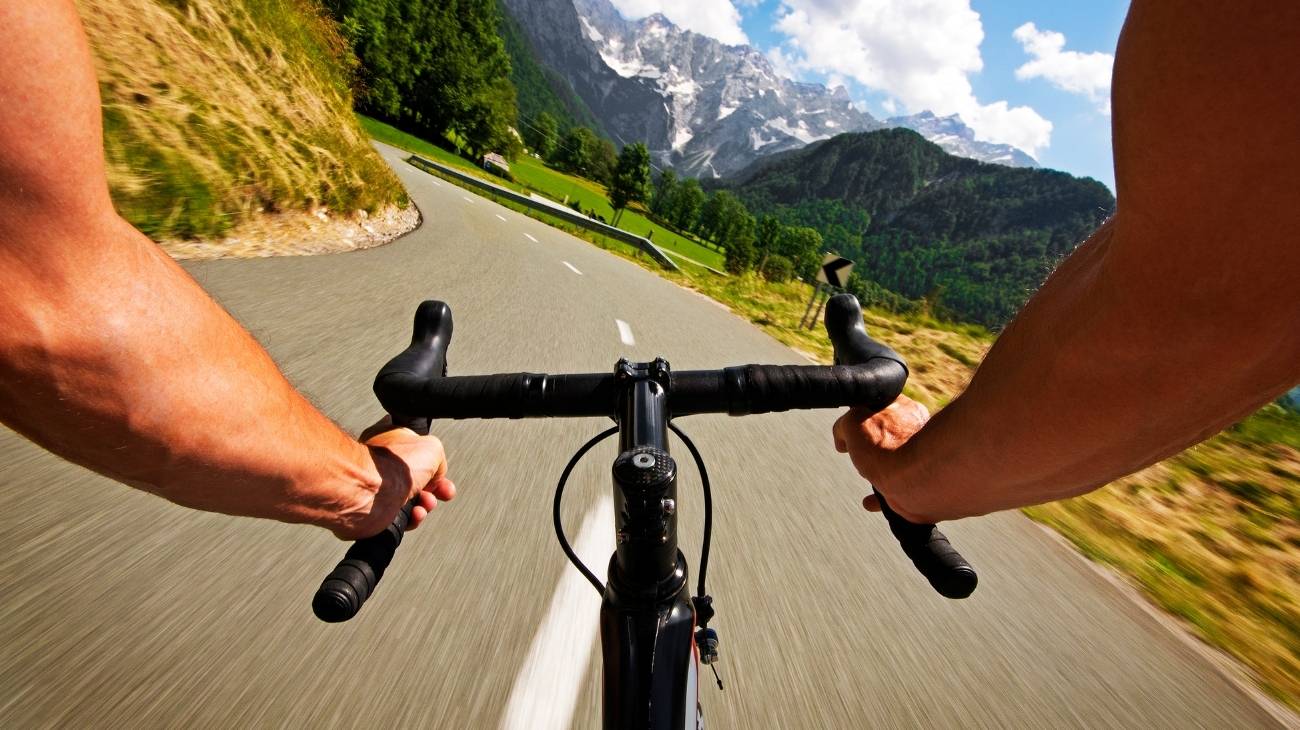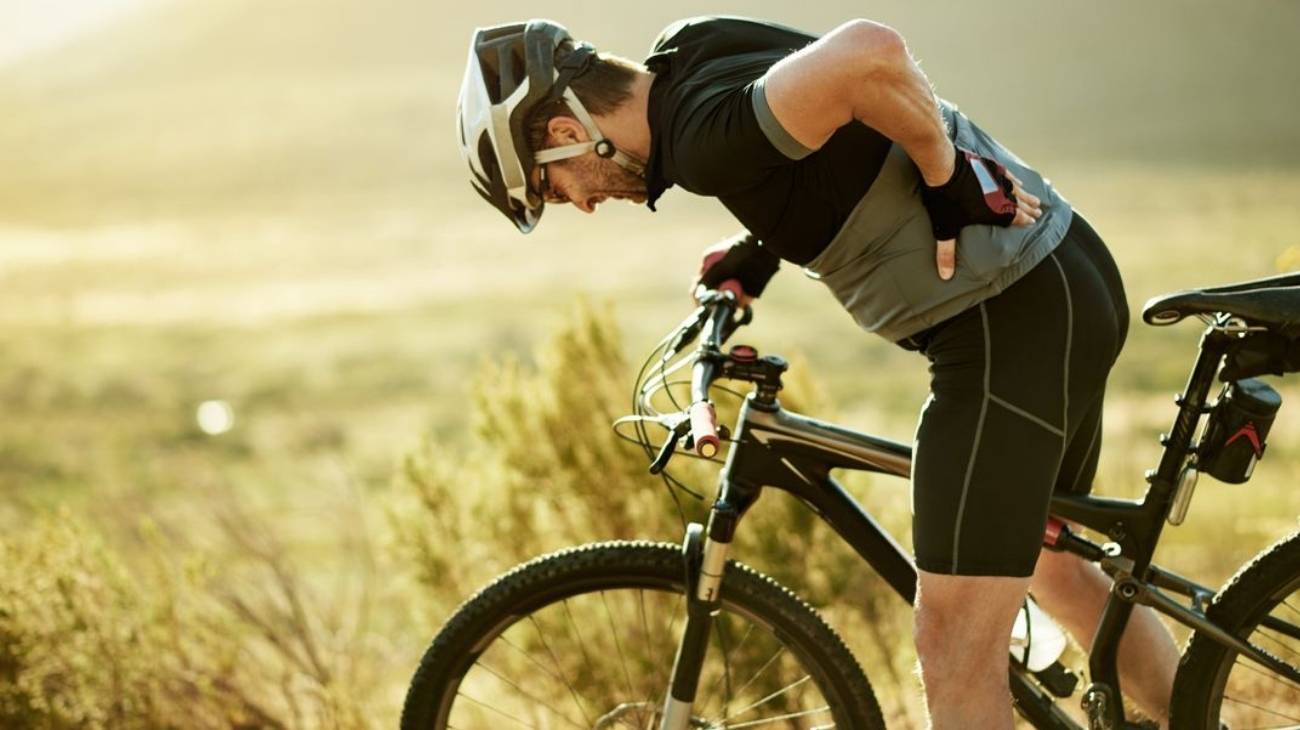The muscles that a cyclist uses most are the gluteus, quadriceps and hamstrings. Errors in their functioning, poor pedalling technique or incorrect posture on the bike cause the other parts of the legs to be injured.
That's why we show you the main sports injuries in the knees and legs of a cyclist, and how each one of them originates. In addition, we explain how to use the PRICE therapy as a form of first aid and which products are available on the market for chronic injuries.
What are the most common types of knee and leg injuries and pain in cyclists?
The main reasons for knee and leg injuries are poor bike fit and repetitive movements performed by the cyclist. On average, for every 100 kilometres of cycling there are more than 15,000 pedal strokes. Do you think that so much repetitive effort takes its toll? Find out about the main injuries you need to identify:
Microtears
There may be one or more micro-tears in the tendon fibres that eventually lead to tendonitis. When one of them occurs, an inflammatory process begins that triggers pain and difficulty in moving the leg. The most exposed are the patellar and Achilles tendons. If the inflammation is not treated, the body reacts with an inflammatory process that will complicate recovery and the correct functioning of the tissues.
Despite not suffering a fall, microtears can be the result of long hours on the bike in which the soft tissues are subjected to a lot of stress and tension, and even poor pedalling technique.
Loss of flexibility
A loss of flexibility in the axis of motion occurs when the extensor apparatus can no longer perform its function properly and the cyclist's traction force is reduced. It occurs due to trauma or degenerative reasons of joint function in the ankles or knees. When it occurs in the latter, you will notice that the kneecap is elevated and each time you pedal you will feel that it does not provide the same force.
Hyperpressure
Repetitive movement of the leg causes the joint space between the kneecap and femur to be reduced, either at one or both ends. This increases wear and tear on the knee and creates constant pressure that can cause extreme damage to the cartilage that later develops into chronic problems such as osteoarthritis.
Meniscus injury
As pedalling does not require twisting of the knee, meniscus injuries are not common. One possible reason is a loss of balance on the bicycle that forces the athlete to put his foot on the ground and causes a twist that affects the meniscus. Also a fall from the bike can cause a strong blow to the joint and inflame this part of the body.
Injury to the popliteal fossa
This "hollow" is located at the back of the knee, next to the hamstrings. When the saddle is too high, the cyclist overextends his legs and causes this ailment. It is a small, short muscle that becomes inflamed during extreme flexion and extension of the leg. The injury causes tissue degeneration, so it must be addressed quickly and effectively to prevent it from becoming a chronic problem.
External rotator cuff injury
This is an increased load in the pedalling motion, specifically when raising the pedal. When there is a bad saddle and handlebar configuration, there is a bad play in the joints to cause this injury that is a result of muscle imbalances that end up generating damage to the external rotators. When not addressed in time, more severe ailments such as cruciate ligament tears are likely.
Achilles tendonitis
An asymmetry in the lower limbs may be one reason, and another cause is poor saddle placement that forces the cyclist to pedal asymmetrically. It is the inflammation of the cord at the base of the calf that connects these muscles to the heel. When it occurs, intense pain is felt at the beginning. As it involves soft tissues, the PRICE therapy can offer you some relief while you check to see the extent of the damage to determine the most efficient treatment.
Best products for recovery from knee and leg injuries in cycling
Bestseller
-
2 Knee Compression Sleeve (Black/Gray)
£20,95 -
2 Knee Compression Sleeve (Green/Navy)
£20,95 -
2 Knee Compression Sleeve (Pink/Bordeaux)
£20,95 -
2 Thigh Compression Sleeve (Green/Navy)
£20,95 -
2 Thigh Compression Sleeve (Pink/Bordeaux)
£20,95 -
Microwave Wheat Bag for Back Pain Relief (Extra Large) (Hearts)
£24,95 -
Microwave Wheat Bag for Back Pain Relief (Extra Large) (Oxford)
£24,95 -
Microwave Wheat Bag for Back Pain Relief (Extra Large) (Sport)
£24,95 -
Microwaveable Wheat Bag for Pain Relief (Hearts)
£20,95 -
Microwaveable Wheat Bag for Pain Relief (Oxford)
£20,95 -
Microwaveable Wheat Bag for Pain Relief (Sport)
£20,95 -
Wheat Bag for Microwave Classic Bottle Shaped (Hearts)
£20,95 -
Wheat Bag for Microwave Classic Bottle Shaped (Oxford)
£20,95 -
Wheat Bag for Microwave Classic Bottle Shaped (Sport)
£20,95
-
2 Calf Compression Sleeve (Black/Gray)
£20,95 -
2 Calf Compression Sleeve (Green/Navy)
£20,95 -
2 Calf Compression Sleeve (Pink/Bordeaux)
£20,95 -
2 Patella Knee Strap (Black/Gray)
£12,95 -
2 Patella Knee Strap (Green/Navy)
£12,95 -
2 Patella Knee Strap (Pink/Bordeaux)
£12,95 -
2 Thigh Compression Sleeve (Black/Gray)
£20,95 -
Ice Massage Roller Ball (Black)
£34,95 -
Ice Massage Roller Ball (Green)
£34,95 -
Ice Massage Roller Ball (Pink)
£34,95 -
Soft Density Foam Roller for Recovery (Black)
£34,95 -
Soft Density Foam Roller for Recovery (Green)
£34,95 -
Soft Density Foam Roller for Recovery (Pink)
£34,95 -
Sport Compression Socks (1 Pair) (Black/Gray)
£20,95 -
Sport Compression Socks (1 Pair) (Green/Navy)
£20,95 -
Sport Compression Socks (1 Pair) (Pink/Bordeaux)
£20,95
How to apply the RICE therapy to treat knee and leg injuries in cycling?
When a soft tissue injury occurs, the PRICE therapy is ideal, moreover, this protocol is the update of the RICE therapy, as it is better known in the world. Its application can last up to 48 and 72 hours, if significant improvement is seen during the process.
- Protection: Whether the damage has been done to the ankle or knee, what you should do in this case is proceed to protect it with a bandage to prevent further damage to the joint and aggravate the injury.
- Rest: It is necessary to give the minimum movement to the joints. Little by little you can try to give mobility and analyse how far you can go, but only if you are accompanied by a doctor who assesses the affected knee or ankle.
- Ice: This step consists of applying ice to the inflamed area of the knee or ankle where the injury has occurred, so that its anti-inflammatory effect helps to both reduce pain and minimise swelling.
- Compression: At this stage, compression should be done with knee or ankle braces, depending on the case. In this way we promote vasoconstriction so that the joint does not continue to swell.
- Elevation: As it is an injury to the lower limbs, we must lie on our back and raise the leg where the injury is located and rest it on a support that allows us to place it above the level of the heart, so that the blood flow is reduced and the inflammation does not continue to increase.
References
- Bini, R., Hume, P. A., & Croft, J. L. (2011). Effects of bicycle saddle height on knee injury risk and cycling performance. Sports medicine, 41, 463-476. https://link.springer.com/article/10.2165/11588740-000000000-00000
- Asplund, C., & St Pierre, P. (2004). Knee pain and bicycling: fitting concepts for clinicians. The Physician and sportsmedicine, 32(4), 23-30. https://www.tandfonline.com/doi/abs/10.3810/psm.2004.04.201
- Bailey, M., MAILLARDET, F., & Messenger, N. (2003). Kinematics of cycling in relation to anterior knee pain and patellar tendinitis. Journal of sports sciences, 21(8), 649-657. https://www.tandfonline.com/doi/abs/10.1080/0264041031000102015
- Hooker, S. P., Figoni, S. F., Rodgers, M. M., Glaser, R. M., Mathews, T., Suryaprasad, A. G., & Gupta, S. C. (1992). Physiologic effects of electrical stimulation leg cycle exercise training in spinal cord injured persons. Archives of physical medicine and rehabilitation, 73(5), 470-476. https://www.archives-pmr.org/article/0003-9993(92)90037-W/fulltext
- Faghri, P. D., Glaser, R. M., & Figoni, S. F. (1992). Functional electrical stimulation leg cycle ergometer exercise: training effects on cardiorespiratory responses of spinal cord injured subjects at rest and during submaximal exercise. Archives of physical medicine and rehabilitation, 73(11), 1085-1093. https://www.archives-pmr.org/article/0003-9993(92)90176-W/fulltext
- Cohen, G. C. (1993). Cycling injuries. Canadian Family Physician, 39, 628. https://www.ncbi.nlm.nih.gov/pmc/articles/PMC2379777/
- Wanich, T., Hodgkins, C., Columbier, J. A., Muraski, E., & Kennedy, J. G. (2007). Cycling injuries of the lower extremity. JAAOS-Journal of the American Academy of Orthopaedic Surgeons, 15(12), 748-756. https://journals.lww.com/jaaos/Abstract/2007/12000/Cycling_Injuries_of_the_Lower_Extremity.8.aspx
- Mellion, M. B. (1991). Common cycling injuries: management and prevention. Sports Medicine, 11, 52-70. https://link.springer.com/article/10.2165/00007256-199111010-00004
- Mulvaney, C. A., Smith, S., Watson, M. C., Parkin, J., Coupland, C., Miller, P., … & McClintock, H. (2015). Cycling infrastructure for reducing cycling injuries in cyclists. Cochrane database of systematic reviews, (12). https://www.cochranelibrary.com/cdsr/doi/10.1002/14651858.CD010415.pub2/full
- Sanner, W. H., & O’Halloran, W. D. (2000). The biomechanics, etiology, and treatment of cycling injuries. Journal of the American Podiatric Medical Association, 90(7), 354-376. https://japmaonline.org/view/journals/apms/90/7/87507315-90-7-354.xml











































































